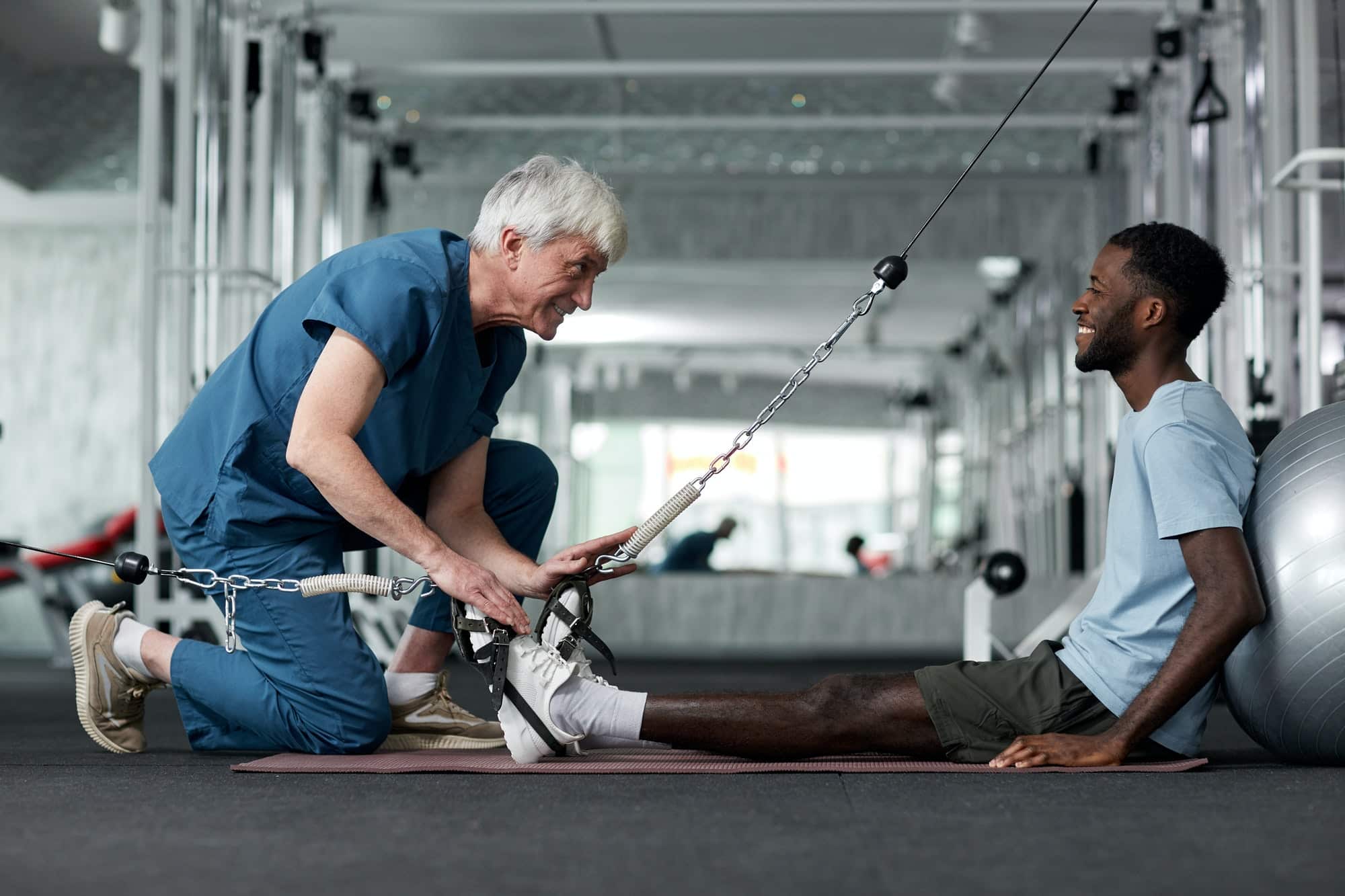How to Develop a Comprehensive Stroke Rehabilitation Program for Swimmers with Shoulder Injuries?

Swimming is a demanding sport that places significant stress on the upper body, particularly the shoulder. A common ailment among swimmers is shoulder pain, which is often due to overuse or incorrect stroke technique. Shoulder injuries can sideline you from your training routine, disrupt your performance, and may even lead to long-term physical damage if not addressed properly. However, with the right approach, swimmers can effectively rehabilitate their shoulder injuries and return to the pool stronger than before. This article will guide you on how to develop a comprehensive stroke rehabilitation program that focuses on alleviating shoulder pain and enhancing swimming performance.
Understanding Shoulder Injuries in Swimmers
Before we delve into the rehabilitation program, it’s crucial to have a firm grasp of the nature of shoulder injuries in swimmers. When you swim, your body undergoes a complex series of movements that primarily involve the arm and shoulder. The muscles around the shoulder—particularly the rotator cuff—work tirelessly to execute every stroke. While these muscles are built for this function, repeated strain can lead to injury.
En parallèle : Rafting bali: unforgettable adventures for all levels
Research shows that the majority of swimming-related shoulder injuries are due to overuse, typically resulting from high-intensity training without adequate rest. This overexertion can result in pain around the shoulder, limiting the swimmer’s ability to perform strokes effectively. If left untreated, this can lead to more severe conditions such as swimmer’s shoulder, a term used to describe a range of shoulder injuries common in the sport.
Importance of a Comprehensive Rehabilitation Program
A comprehensive stroke rehabilitation program is essential in managing and preventing shoulder injuries. Developing such a program shouldn’t be a solo endeavor. It involves collaboration with sports physical therapists, scholars in sports medicine, and swimming coaches.
A lire en complément : How Can Virtual Reality Tools Improve Cognitive Skills in Football Quarterbacks?
The key objective of a stroke rehabilitation program is to alleviate shoulder pain, strengthen the muscles around the shoulder, improve stroke technique, and ultimately enhance swimming performance. It must be a well-rounded program that not only addresses the present injury but also focuses on preventing future ones.
Elements of an Effective Stroke Rehabilitation Program
An effective stroke rehabilitation program for swimmers with shoulder injuries should consist of the following elements:
Physical Therapy
Physical therapy is a vital component of any rehabilitation program. The goal of physical therapy for swimmers is to restore mobility to the shoulder, reduce pain, and strengthen the muscles. Physical therapists use a variety of techniques to achieve these objectives, including stretching, strengthening exercises, soft tissue manipulation, and patient education.
For instance, a physical therapist may recommend a series of rotator cuff strengthening exercises to fortify the muscles that stabilize the shoulder. Additionally, they may employ techniques to improve the flexibility of the shoulder muscles, making them more resistant to strain.
Stroke Correction
While it may seem counterintuitive, swimming can be a part of the rehabilitation program. However, it’s not just about swimming laps. The focus is on correcting stroke technique to reduce unnecessary strain on the shoulder.
A swimming coach or instructor can guide you in modifying your stroke techniques to lessen the burden on your shoulder. For instance, altering hand entry position during the freestyle stroke can reduce impingement in the shoulder. Furthermore, maintaining a balanced body position in the water can also minimize shoulder strain.
Preventive Measures
Prevention is better than cure, and this saying holds when dealing with shoulder injuries in swimmers. Apart from addressing the existing injury, a comprehensive rehabilitation program should also focus on preventive measures. This can include adequate rest periods between training sessions, proper warm-up and cooldown routines, and awareness of the signs of overuse.
Regular Assessment
Regular assessment is vital in monitoring progress and adjusting the rehabilitation program as needed. This can involve regular check-ups with a physical therapist, monitoring shoulder strength, and observing any changes in pain levels. By tracking these metrics, modifications can be made to the program to ensure it remains effective and relevant to your specific needs.
Incorporating Technology in Stroke Rehabilitation
The use of technology in sports rehabilitation is rapidly growing. Tools such as wearable devices can provide valuable data on stroke technique, body position, and even muscle activation. This data can help you and your physical therapist make informed decisions about your rehabilitation program.
For instance, a wearable device can provide real-time feedback on your stroke technique, enabling immediate corrections. Similarly, it can help track your training load, helping you avoid overexertion.
In conclusion, shoulder injuries in swimmers are common but manageable with the right approach. Developing a comprehensive stroke rehabilitation program—incorporating physical therapy, stroke correction, preventive measures, and regular assessment—can provide the pathway to recovery. As technology continues to advance, so too will the options for effective rehabilitation strategies. As you navigate your rehabilitation journey, remember to be patient, attentive to your body’s signals, and most importantly, keep a positive mindset. Even with a shoulder injury, you can still make a strong comeback in the pool.
Addressing Shoulder Pain Through Physical Therapy
Physical therapy is a central tool in the battle against shoulder pain. By targeting the specific muscles affected, a physical therapist can help to reduce discomfort and improve mobility. Particularly, the rotator cuff, a group of muscles located around the shoulder joint, are often implicated in swimmer shoulder injuries. Precise and targeted exercises can bolster these muscles, increasing their strength and stability.
In the realm of sports med, the value of physical therapy cannot be overstated. It is not merely a reactive measure to be used once an injury has occurred, but it can also serve as a preventative measure. Implementing a regular physical therapy routine can help to build resilience in the shoulder muscles, reducing the likelihood of future injury. Moreover, the physical therapist can provide critical guidance and advice to the swimmer, educating them on correct movement and lifting strategies, the importance of adequate rest, and how to recognize the early signs of overuse.
The assistance of the physical therapist goes beyond the confines of their clinic. They can recommend useful online resources, such as Pubmed Google or Google Scholar, for the swimmer to gain a more comprehensive understanding of their condition and its management.
Stroke Technique: A Critical Element in Swimmer Shoulder Rehabilitation
While physical therapy plays an essential role in rehabilitation, it is not the only factor to consider. The stroke technique also holds significant importance. Swimmers with poor stroke technique place unnecessary strain on the shoulder muscles during every stroke, increasing the risk of injury. Correcting these technical flaws is, therefore, paramount.
A swimming coach or instructor can offer guidance on adjusting the stroke technique. A small tweak, such as altering the hand entry position during the freestyle stroke, can significantly reduce shoulder pain. By carefully analyzing each element of the stroke – the hand entry, the pull-through, the recovery – the coach can help the swimmer develop a smoother, more efficient technique that reduces strain on the shoulder.
Utilizing training tools, like fins, can also be beneficial. Fins can help the swimmer to maintain a balanced body position in the water, reducing the load on the shoulder muscles. Regular drills can be performed to enhance technique and maintain range of motion in the shoulder joint.
Looking to the Future: The Role of Technology in Stroke Rehabilitation
The advancements in technology have opened up a new frontier in stroke rehabilitation. Wearable devices, for example, can provide invaluable data for both the swimmer and their physical therapist. This data can include information on stroke technique, body position, and even muscle activation.
These devices can provide instant feedback, allowing the swimmer to adjust their technique mid-swim. They can also help to monitor the training load, alerting the swimmer if they are pushing too hard and risking overuse.
As the technology continues to evolve, we can expect to see even more sophisticated devices that can provide a wealth of data to aid in rehabilitation. This technology serves as a promising tool for swimmers looking to return to swimming after a shoulder injury.
Conclusion: Patience, Perseverance, and Positivity
Shoulder injuries can be a frustrating and challenging setback for any swimmer. However, with the right rehabilitation program, a full recovery is very much achievable. By engaging in regular physical therapy, refining stroke technique, taking preventive measures, conducting regular assessments, and harnessing the power of technology, swimmers can come back stronger than before.
Remember, rehabilitation is a journey that requires patience, perseverance, and a positive mindset. It is crucial to listen to your body and not rush the recovery process. With time, dedication, and the right approach, you can return to the pool, ready to achieve new heights in your swimming career. Keep your focus on the end goal: a strong, healthy shoulder and a return to the sport you love. The road to recovery may be challenging, but it is undoubtedly worth the effort.
